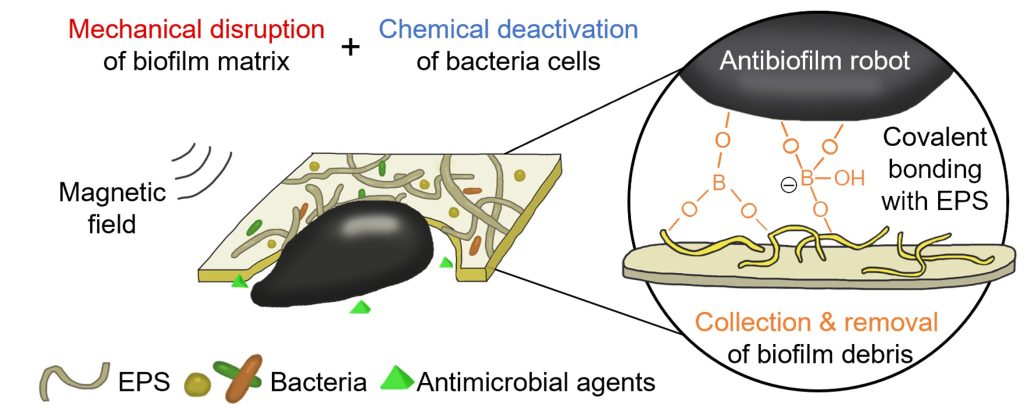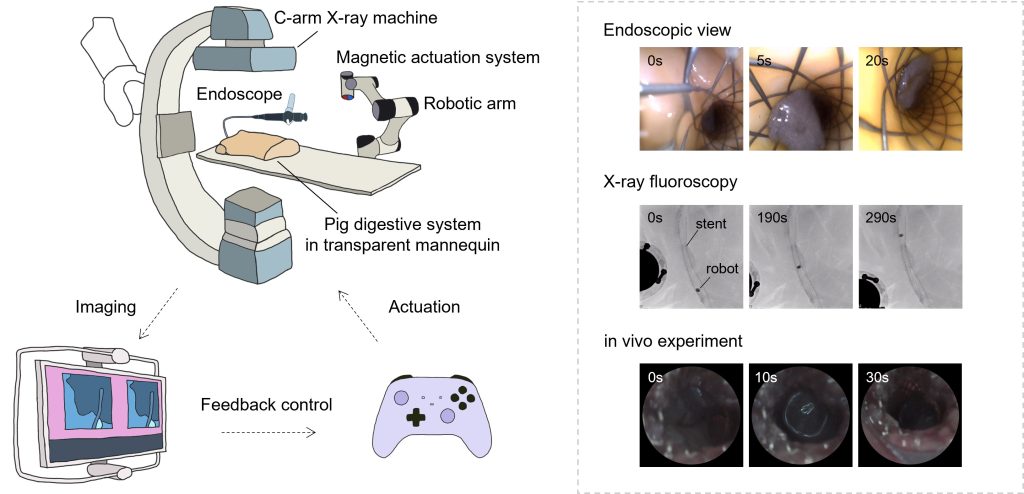An international research team led by The Chinese University of Hong Kong (CUHK) has achieved a breakthrough in the field of medical microrobot. Led by Professor Li Zhang, the team – in partnership with Nanyang Technological University (Singapore) and the Max Planck Institute for Intelligent Systems (Germany) – has developed the world’s first antibiofilm liquid-bodied magnetic-controlled robot, introduces new features including, possessing unique viscoelastic properties that allow the robot to adapt to diverse operational environments, and along with a triple synergistic antibiofilm mechanism, paving the way for innovative solutions to combat biofilm infections. The findings have been published in the renowned international research journal Science Advances.
Two new features aiding in combating biofilm infections
The newly developed liquid-bodied robot uses a dynamic cross-linked magnetic hydrogel with unique viscoelasticity that aid in eliminating biofilms within the human body. Professor Zhang explained: “By precisely modulating external magnetic fields, the robot can switch between viscoelastic behavioural modes. In elastic mode, it rotates, rolls and overcomes obstacles within the body. In liquid mode, it deforms into a fluidly robot to infiltrate crevices and eradicate any biofilm within them.”
The robot also features a triple synergistic antibiofilm mechanism, including physical biofilm disruption, chemical bacteria deactivation and biofilm debris removal. First, magnetic forces transmitted through the robot’s motion mechanically disrupt biofilm structures and weaken their protective effects; then, the antimicrobial agents released by the robot target planktonic bacteria cells; and finally, the robot forms bonds with biofilm fragments, which prevents infections from recurring.
Achieved 87% effectiveness in tests aiming for future clinical applications
The liquid-bodied robot performed exceptionally in tests on infected medical implants. Biofilm on a 3D-structured hernia mesh was reduced by 84% after treatment, while 87% of bacteria on a metal biliary stent were killed. Professor Zhang added: “Our team pioneered dual-modality navigation using endoscopy and X-ray imaging, enabling precise control of the robot through metal stents in pig bile ducts. In a mouse model with infected stents, complete weight recovery was observed within 12 days, with a 40% reduction in inflammation indicators compared to the control group.”
For the full research, please visit: https://www.science.org/doi/10.1126/sciadv.adt8213.

The antibiofilm robot can transform into liquid mode, penetrating deep into crevices within a patient’s body to remove biofilms.

The research team has pioneered a triple synergistic antibiofilm system, including physical biofilm disruption, chemical bacteria deactivation, and biofilm debris removal to prevent recurrent infections.

A micro-robotic surgical platform is utilised to control and navigate the liquid-bodied robot.
CUHK Press Release: Click here!